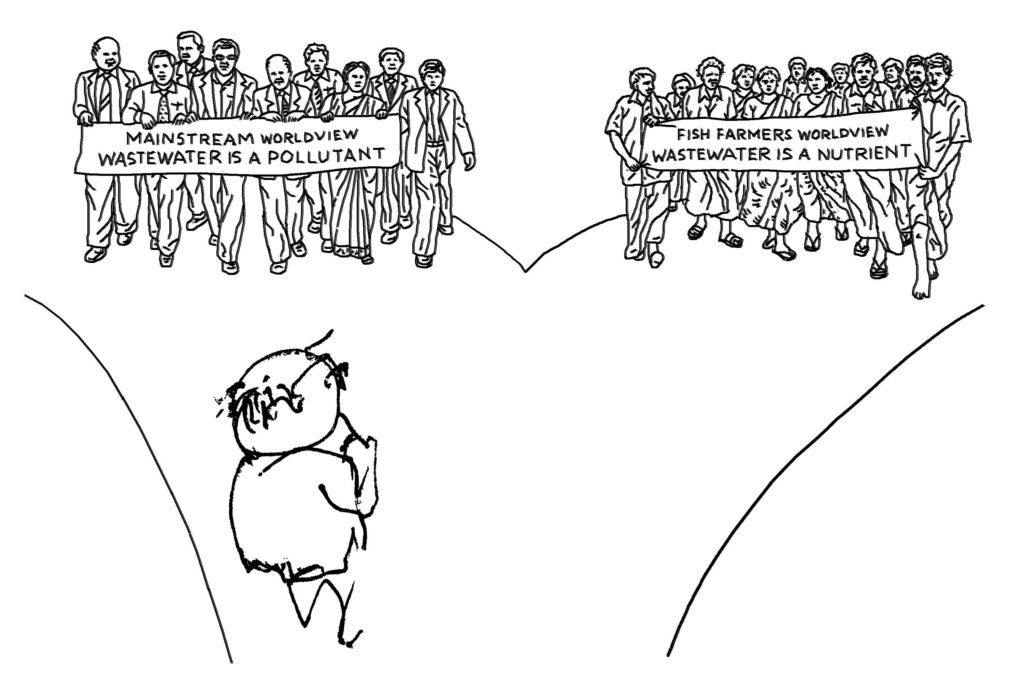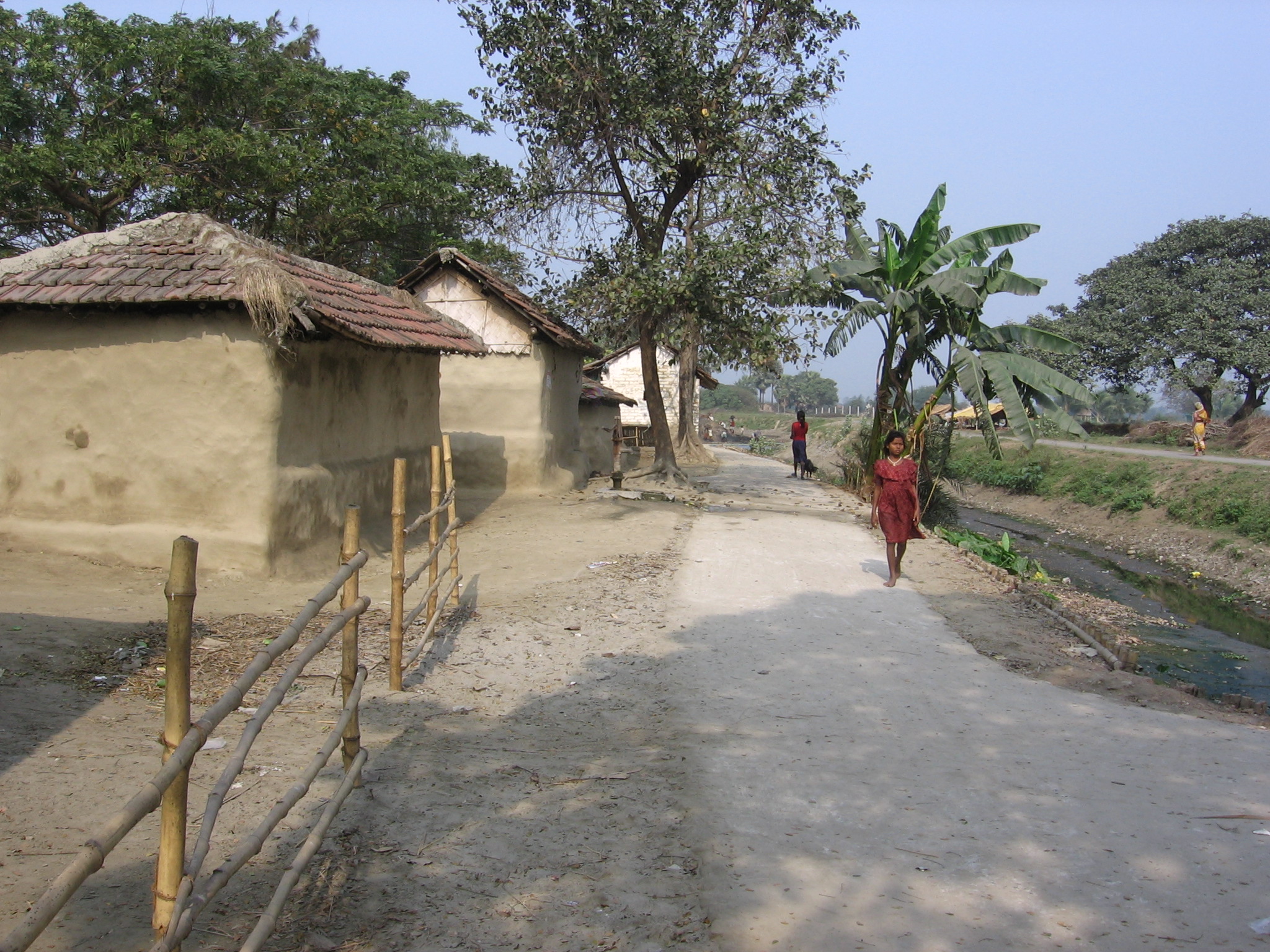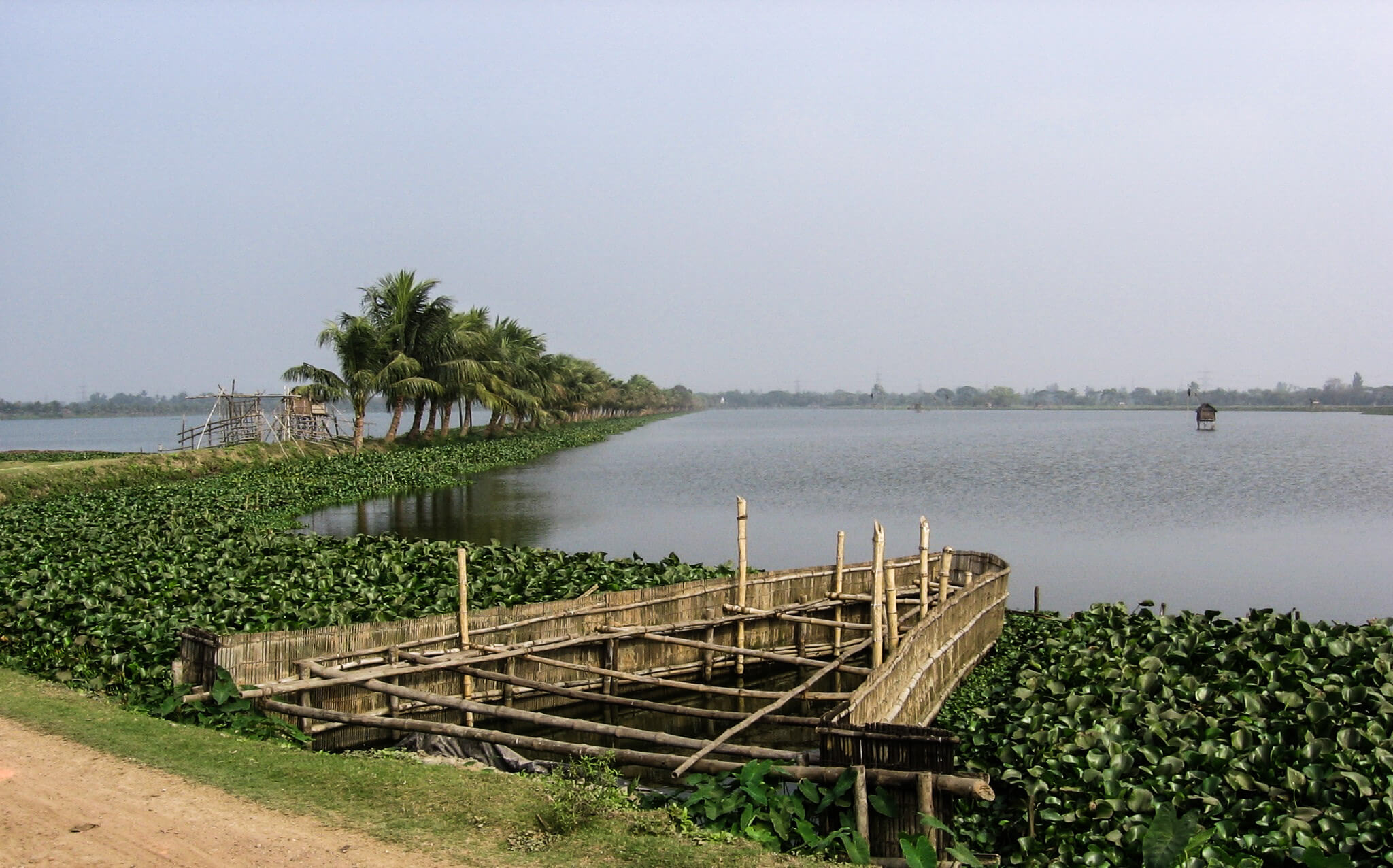Fishermen and Farmers
The uniqueness of the people living in the East Kolkata Wetlands lie in their capacity to convert, through natural resource management, an ecologically disadvantageous situation into one that offers much better livelihood opportunities. When, after the decaying of the Bidyadhari, the brackish water fishing could not be sustained in the wetlands, a creative fish producer and the local people successfully developed a system to farm fish in a water area using city sewage. Subsequently, they grew a second crop of paddy using pond effluent, a practice that continues, reviving the fortunes of the poorer fish farmers for the next few generations. This population was thus saved from the need to migrate to alien pastures in renewed search for livelihood.

The East Kolkata Wetland area can be divided on the basis of three basic wetland practices: wastewater fisheries, effluent-irrigated paddy cultivation and vegetable farming on garbage substrate. The wetlands and resource recovery area form a good example of productive commercial activities and support one of the largest clusters of livelihood opportunities for the poorer section of the community.
The worldview of this community is demonstrated thus:

Published with permission from Dhrubajyoti Ghosh’s Ecosystem Management: Towards Merging Theory and Practice (2014) by Dhrubajyoti Ghosh, illustration by Amit Roy

Typical Village in EKW

Sewage Used for Pisciculture and Agriculture
Waste Pickers and Solid Waste Recyclers
These are the waste pickers at the Dhapa dumpsite, who come from more than 20 small hamlets situated about 10 km around the dumpsite, which collects the entire city’s solid waste. They recycle a large number of items, both organic and inorganic, and sell it to middlemen who come once a week to their dwelling places to buy it from them. These are the itinerant waste buyers.

Waste Segregation at Dhapa Dump Site
Auxiliaries
Fishing requires various kinds of gear which have a variety of names in local language. These are often made out of locally available plants that grow in the wetlands, and there are especially skilled workers who are brought into the wetlands for this purpose. For example, the inlet and outlet gates of the fish ponds are called pata in Bengali and are made of bamboo. Close to the wetlands, there is a place called Baruipur from where specially skilled people come to weave pata. There is also routine work like net repair, pond bank maintenance, accounts maintenance and so on. Every fish pond has in place a full team of workers to do its work on a regular basis.

Structure Made of Bamboo used as Inlet Point for Sewage (Pata)
[Previous Page: Wastewater Flow] [Next Page: Biodiversity]
